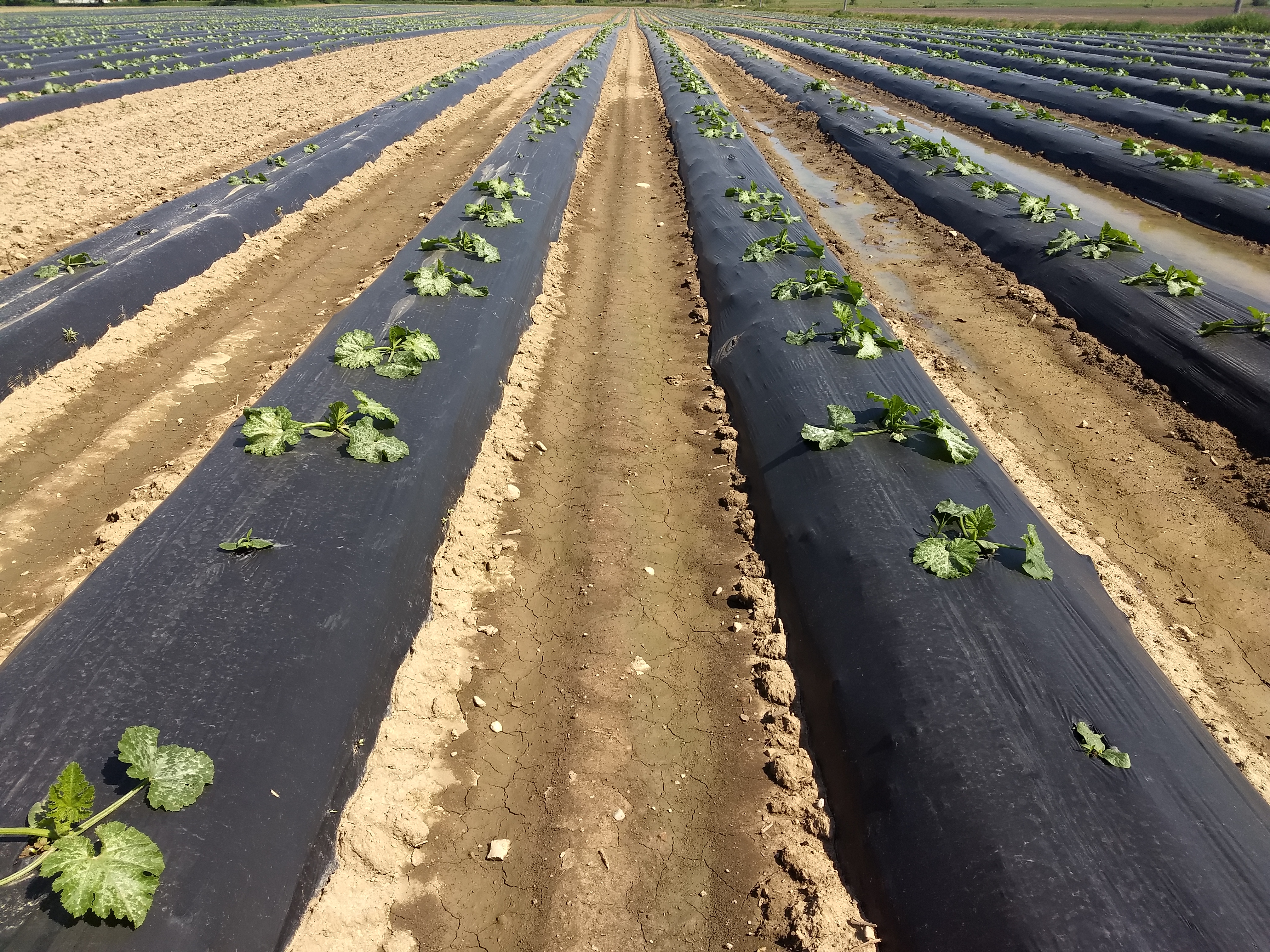East Michigan vegetable update – June 10, 2020
Ground preparation, planting, irrigating, weed-insect-disease control and harvesting: growers were doing it all this week.

Weather
Third consecutive week of above normal temperatures have caught us up to the five average for degree days. There are lingering effects of Tropical Storm Cristobal that may result in severe thunderstorms today, June 10, with high winds and possible hail then a cool down over the next 10 days with about 0.25 inches of rain forecasted.
You can find more detailed weather information for your area by visiting the Michigan State University Enviroweather station closest to you:
Here is a table that summarizes seed and root maggots and European corn borer activity, based on growing degree day models. I used Lapeer as an example. The onion maggot model is from NEWA.
|
| ||||
|---|---|---|---|---|
|
Current degree days (Lapeer) |
1118 |
984 |
864 |
514 |
|
Overwintering generation start to emerge and lay eggs |
201 (occurred April 10) |
390 (occurred May 18) |
298 (occurred May 13) |
450 (occurred June 11) |
|
Peak flight and egg laying of overwintering generation |
342 (occurred May 1) |
735 (occurred June 1) |
565 (occurred May 27) |
700 |
|
Peak flight and egg laying of first generation |
1,235 (predicted to occur June 14) |
1,752 |
1,476 |
1,700 |
Pest updates
Asparagus rust has already been seen in west Michigan in fields that are going to fern. A good start for this pathogen is a mix of tebuconazole (Vibe, Toledo, others) and chlorothalonil (Bravo). An organic protectant would be micronized sulfur, though it is not very effective.
Thrips in onions have been seen in low numbers and growers have applied their first Movento plus NIS application. This product is systemic but is a bit slow to accumulate in plant tissues, so it takes about a week to fully see the impact. One grower I spoke to tank-mixed with Luna Tranquility for Stemphylium protection at the same time.
Colorado potato beetle reached treatment levels on eggplants at one farm.

The chief concern among growers I visited this week was about deer, groundhogs and birds. One squash field required 20% replant from birds picking seeds out behind the plastic seeder. The perfect hole left behind by the seeder in the plastic must make it easy to know where to look. Groundhogs and deer are browsing heavily on young crops in some areas. Groundhogs can be hunted, trapped and gassed in burrows all season, but deer require a block permit. Both can be excluded with proper fencing, though it is the most expensive option.
Other farmers can be pests, it is true! We are getting to the time of year when broad acre field crop post-emergent herbicide applications are taking place. With large acreages being leased and applications performed by contracted companies, accountability for spray drift can be difficult to hammer down. You, as a specialty crop farmer, need to have “The Talk” with whoever manages that field before June to make sure you are on their radar.
On July 31, the use of Engina, XtendiMax and FeXapan dicamba products on resistant soybeans will no longer be allowed. So, we’re not out of the woods on that one yet. But glyphosate has been the main drift chemical we see, along with 2,4-D damage sometimes showing up on farms that have lots of residential lawns around them.
Crop progress
This week, growers were laying plastic, planting, running irrigation and cultivating between-row and in-row weeds.
Asparagus harvest continues but the hot weather has impacted quality of tips and some fields are being passed over until cooler weather arrives.
Cilantro and radishes were being harvested and bunched this week. Some radish bolting was observed but at very low levels.
Garlic scapes are emerging and should be snapped off at least and sold if possible.
Sweet onions are up to seven leaves and growers who purchased their transplants from down south have expressed dissatisfaction with the stand this year. I think there could be multiple factors at play. Smaller transplants can sometimes not root well, lose their moisture faster than larger transplants and are more sensitive to hard freezes, which we definitely had. If you can afford to separate your bunches and pre-sort your transplants by size, you can create a fuller block of larger transplants that isn’t so gap toothed from small plant death.
Leeks and celery root were freshly transplanted at one farm.
Peppers and eggplants were being transplanted this week.
Rhubarb was flowering at one farm.
Melons are just beginning to vine on some farms.
Pumpkins and hard squash were being transplanted on plastic at some farms. Summer squash was being seeded into plastic on others. With the high winds expected today, June 10, I wonder if we might see some wind-whipping in those transplants if they were leggy.
Hoop house-grown tomatoes, zucchini and beans were all going to market, along with young onions. Note, if some onions start putting out flowers, they will never make a good storage crop and might be worth pulling now and selling as bunching onions.
Great Lakes Vegetable Producer’s Network
MSU Extension is participating in a live, weekly roundtable discussion during the growing season for commercial vegetable producers in the Great Lakes and Midwest region. Join us! We broadcast live via Zoom at 12:30 p.m. ET/11:30 a.m. CT every Wednesday from the first week of May to the first week of September. Listen live or later. If you have a pressing vegetable production issue that you would like discussed, simply email it, along with your phone number, to greatlakesvegwg@gmail.com.
Next week: Predicting Pest Pressure
Please contact me at phill406@msu.edu or 616-901-7513 with questions, concerns, or to schedule a farm visit. You can also send plant materials to MSU Plant & Pest Diagnostics.



 Print
Print Email
Email

